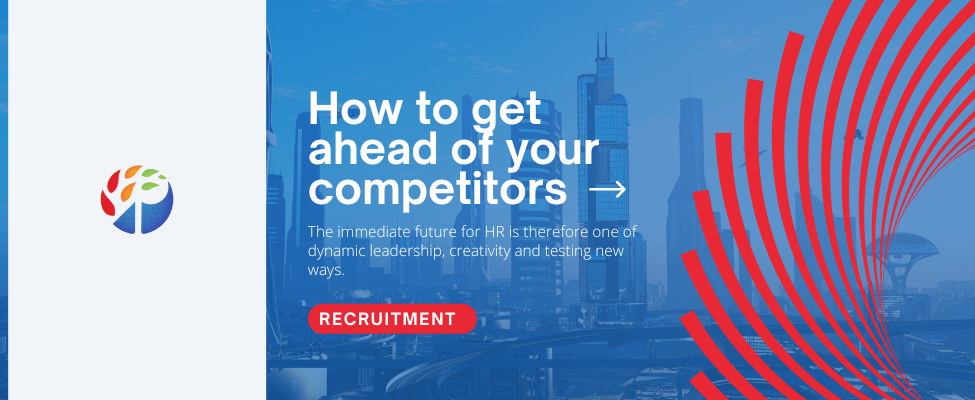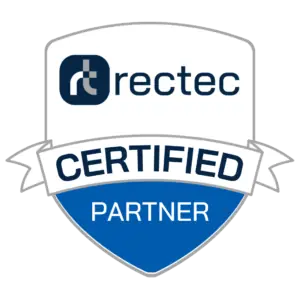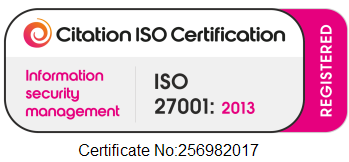How To Get Ahead Of Your HR Competitors?
Staying ahead of your HR competitors is essential when your organisation is looking to attract the best talent on the market. The focus is switching away from short-term actions, and toward the more strategic, proactive planning that encourages innovation and experimentation in the modern-day world of work.
The HR sector is currently facing some of the biggest challenges in a decade including testing, learning about employee needs, and defining what the future of work look like. However, with buzzwords such as “driving increased employee engagement”, “hybrid working and “employee wellbeing” sweeping the industry it can be tricky to know how to adapt to future challenges with resilience.
The immediate future for HR is therefore one of dynamic leadership, creativity and testing new ways of doing things, boldly focussing on new key areas which have become imperative in the hiring of the best talent.
What’s next for HR and how to prepare?
Due to the pandemic, 60% of HR teams are spending more time on flexible working policies, and 63% say flexible working has become more of a priority for HR. This is the beginning of organisations fundamentally rethinking how, when and where work is performed.
Traditional working hours have been swapped for fresh, alternative approaches which have provided increased hybrid working policies enabling people to thrive in new ways. While not all organisations may be fully on board, many accept some form of hybrid working is here to stay. So, HR teams must be fully prepared, with solid strategies in place to clearly enact this and focus on the best approaches for both employee and business success.
Providing great employee experiences is another vital priority for attracting and retaining top talent. Over recent years, mental health and wellbeing have come urgently to the forefront, while Diversity, Equality, and Inclusion (DEI) is moving ever higher on HR managers agenda. At the same time, there’s been a shift toward employees wanting to increasingly work for companies where the cultural values align with their own.
With this shift in the ‘balance of power’ between candidates and employers, people are now able to be more considerate about who they work for, as well as being more demanding of future employers. The message is clear – organisations who don’t listen to their employees and don’t place an emphasis on creating a diverse, equal and inclusive place to work will lose great talent.
Here are a few ways you can develop a great DEI plan:
- PRE-HIRE ASSESSMENTS: Use objective pre-hire assessments to minimise bias and optimise hiring decisions.
- DIVERSE CANDIDATES: Mandate diverse candidate slates so that hiring managers fill positions from a diverse pool of qualified candidates.
- PAY AND PROMOTION: Evaluate pay and promotion decisions for diversity and equity.
- MITIGATE BIAS: Actively mitigate bias in performance evaluations, talent, and succession.
- ACKNOWLEDGE: Reward and recognise leaders for DEI results.
96% of HR leaders are more concerned about employees’ well-being today than before the pandemic. Employee mental health and well-being has also rocketed to the top of HR’s agenda, meaning HR leaders are spending more time developing wellbeing and mental health initiatives.
With more people working longer, swapping the hours they would usually commute with more hours at their desks, leaders need to stay on top of employee well-being not just for the workforce but for the overall success of the business.
Here are a few ways you can invest in employee mental health and well-being:
- INVEST IN WELLBEING: Relocating budget to invest more in wellbeing and mental health resources such as training programs.
- GET IT COVERED: Make sure mental health is covered in private health benefits offered to employees.
- DEDICATED SUPPORT: Designate dedicated mental health officers to offer support to employees.
- CHECK-IN: Check-in frequently with remote workers through staff surveys and forums.
Enhanced employer branding and seeking out newer, more effective ways to hunt for talent is also another pathway recruiters can use to combat the war over quality candidates.
Candidate experiences that truly delight throughout the entire hiring process at every touch point are becoming crucial for keeping talent engaged with timely updates and being nimble, agile, responsive, and authentic.
What’s more, to do their best work HR and People leaders must be able to access the right information at the right time all in one place. HR leaders need to use recruitment systems to not only manage their global workforce from one single system but to help experiment with new policies and strategies as part of this test-and-learn approach in the new world of work. Recruitment systems make it easier to communicate with the entire workforce, wherever they are, and gather employee feedback in real-time which speeds up their ability to understand and respond.
Digital systems also enable HR managers to have a competitive edge in the war for talent, by helping HR leaders find people and hire them faster while streamlining the onboarding process and experience across regions. With the right digital technologies, HR teams are able to redesign and re-architect work successfully.
In conclusion, businesses must make themselves an irresistible proposition for new recruits. The challenge for HR then is to consider how they stand out from a competitive crowd at a time when the talent pool is bigger and more demanding than ever.
Share this post and follow us on social media!
Like our blogs? Sign up for our newsletter




Comments are closed